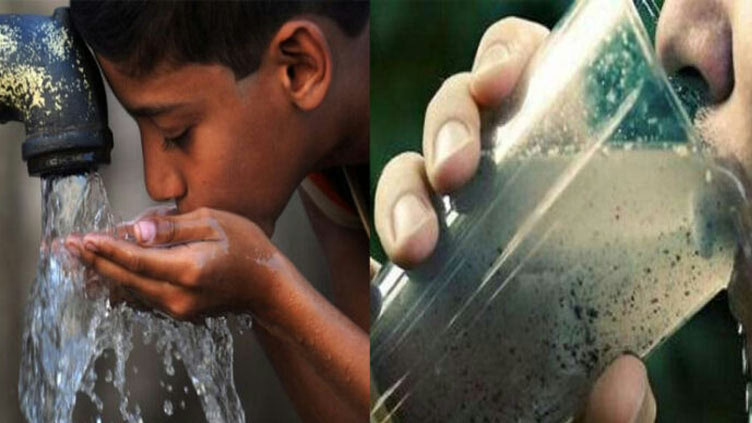Hidden hazards in Islamabad’s water: microplastics, chemicals, and ageing pipelines threaten public health
Experts urge upgrading water treatment processes to remove microplastics and reduce other chemical components at critical levels

Samina, a middle-aged woman living in F8 Sector, Islamabad, has been suffering from stomach pain and nausea, along with severe fatigue, for more than a year. Basic medical tests revealed no specific issues. However, her symptoms worsened when she was at home using tap water from her building.
“We started boiling the water before use, but it often smelled like chlorine or appeared cloudy when there was a prolonged electricity cut,” she said. For the first time, she felt there was an issue with the water. She suspected that bacteria might lead to waterborne diseases, but it was shocking when studies revealed that ageing pipes, chemical pollution, and microplastics are major contributors to health issues related to tap water in the capital city.
Islamabad primarily relies on treated water from the Khanpur and Rawal supplies, which are processed at the Sangjani Water Treatment Plant and subsequently distributed through a network of pipelines to a densely populated area. An assessment of the water supply in Islamabad by the MPDI indicates that anthropocentric activities have contributed to the pollution of the water sourced from Khanpur Dam. As it reaches consumers, the water quality deteriorates due to algae growth and the presence of cracks in the supply pipes. Despite the functioning of the Sangjani Water Treatment Plant and efforts to clean the contaminated water, maintenance, repair, and monitoring are essential to ensure the safety and cleanliness of Islamabad’s water system.
The Pakistan Council of Research in Water Resources (PCRWR) has tested water from various parts of Islamabad. Their recent reports indicate that the water reaching homes in many areas is not always safe, highlighting that even treated water can be compromised without proper pipeline management.
Research studies—such as “An Assessment of the Drinking Water Supply System in Islamabad, Pakistan,” by Jamshaid Iqbal, Hussnain Javed, and Muhammad Tahir Sajjad—have found microplastic particles in Rawal Lake and other nearby freshwater bodies. These tiny plastic pieces and fibres are indications that plastics are entering the sources that supply drinking water plants.
Independent studies conducted in Islamabad and Rawalpindi have detected high levels of arsenic, lead, and nitrates in numerous drinking water samples. In some instances, more than half of the samples were deemed unsafe for consumption. These toxic chemicals can trigger serious long-term health issues, including nerve damage, developmental problems, and cancer.
Climate and environment advocate Murtaza Talpur emphasises, “We have no idea how much plastic we consume every day. Just take a look around your home and see how much plastic is lying there.” Plastic pollution has become a significant crisis in Pakistan, with the country generating around 3.3 to 3.9 million tons of plastic waste annually. According to late 2024 and early 2025 data, nearly 86% of this plastic is mismanaged. One of the major issues is the extremely low recycling rate, which stands at only about 3 to 4%, while reliance on single-use plastics, such as bags and bottles, continues to grow, blocking waterways, rivers, and riverbeds.
For individuals like Samina, experts acknowledge that while microplastics in drinking water are a concern, there is no conclusive evidence linking them to disease. The WHO notes that further research is needed, but microplastics can carry harmful chemicals and germs, with bacteria and viruses posing a more immediate risk. Conversely, chemical pollutants such as heavy metals and nitrates present in the water supply of Islamabad and Rawalpindi are already established as causes of long-term health issues. Studies also indicate that microplastics may harbour toxic substances that disrupt hormones or damage cells, posing potential risks to children, pregnant women, and individuals with chronic illnesses.
Experts urge upgrading water treatment processes to remove microplastics and reduce other chemical components at critical levels. It is essential to fix leaks, replace corroded pipes, and eliminate cross-connections between the water supply and sewage systems. Controlling industrial impact in watersheds is crucial to minimising chemicals and microplastics at their source while enhancing filtration at the consumer level. Furthermore, consistently testing water for dissolved particles and implementing standardised monitoring mechanisms are vital.
For individuals like Samina, attributing symptoms solely to microplastics is scientifically premature. It is more likely that a combination of exposures, including microbes, chemical contaminants, and stressors from intermittent supply, collectively trigger health problems. The WHO and major reviews emphasise that microbial contamination remains the most pressing, immediate threat, while microplastics represent an emerging concern that requires attention.
Read also: WASA Rawalpindi imposes drought emergency amid water crises
The issue of microplastics and water pollution extends beyond the previously mentioned problems and is exacerbated by the unplanned and uncontrolled construction in the area.


